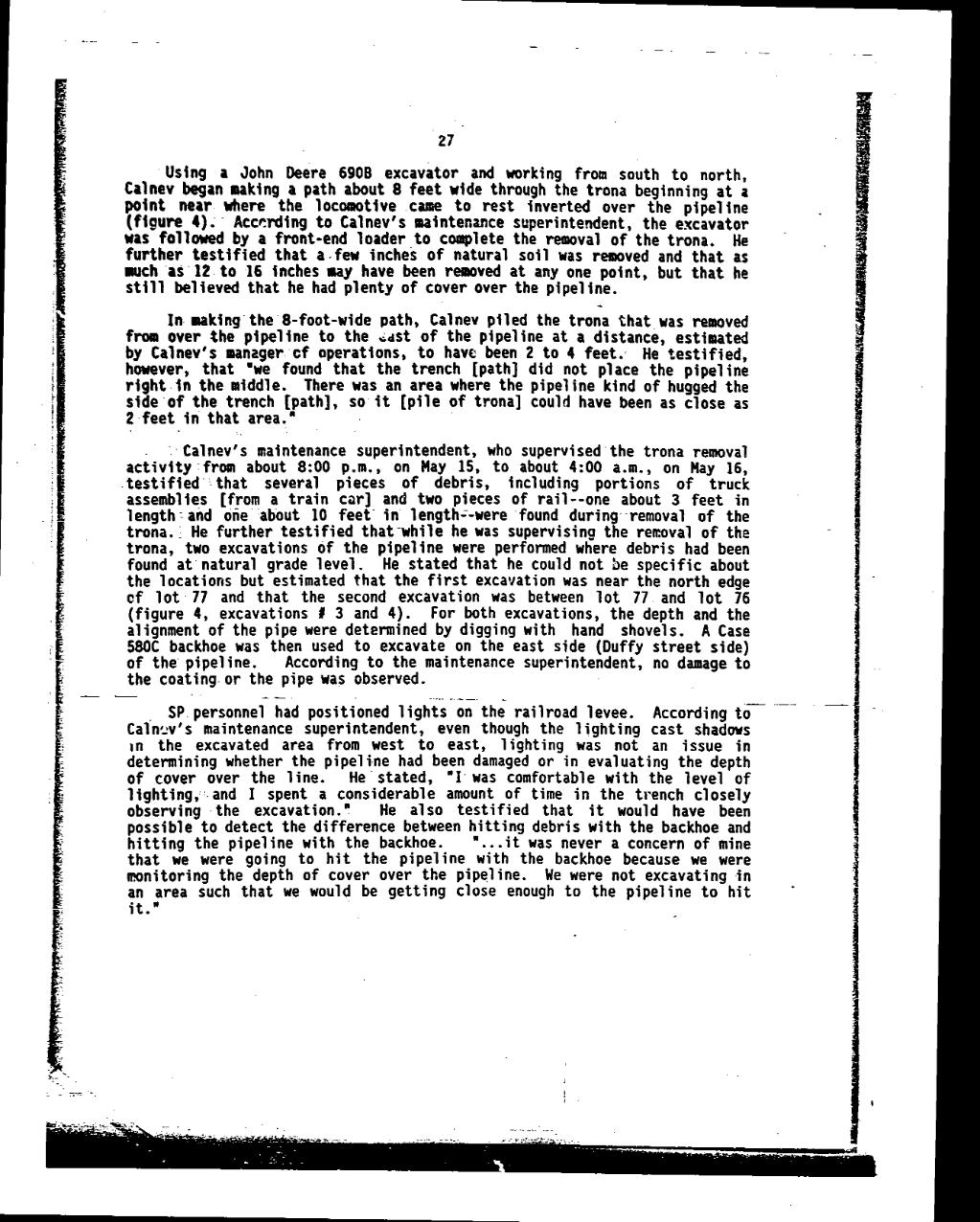27
Using a John Deere 690B excavator and working from south to north, Calnev began making a path about 8 feet wide through the trona beginning at a point near where the locomotive came to rest inverted over the pipeline (figure 4). According to Calnev’s maintenance superintendent, the excavator was followed by a front-end loader to complete the removal of the trona. He further testified that a few inches of natural soil was removed and that as much as 12 to 16 inches may have been removed at any one point, but that he still believed that he had plenty of cover over the pipeline.
In making the 8-foot-wide path, Calnev piled the trona that was removed from over the pipeline to the east of the pipeline at a distance, estimated by Calnev’s manager of operations, to have been 2 to 4 feet. He testified, however, that "we found that the trench [path] did not place the pipeline right in the middle. There was an area where the pipeline kind of hugged the side of the trench [path], so it [pile of trona] could have been as close as 2 feet in that area."
Calnev’s maintenance superintendent, who supervised the trona removal activity from about 8:00 p.m., on May 15, to about 4:00 a.m., on May 16, testified that several pieces of debris, including portions of truck assemblies [from a train car] and two pieces of rail—one about 3 feet in length and one about 10 feet in length—were found during removal of the trona. He further testified that while he was supervising the removal of the trona, two excavations of the pipeline were performed where debris had been found at natural grade level. He stated that he could not be specific about the locations but estimated that the first excavation was near the north edge of lot 77 and that the second excavation was between lot 77 and lot 76 (figure 4, excavations # 3 and 4). For both excavations, the depth and the alignment of the pipe were determined by digging with hand shovels. A Case 580C backhoe was then used to excavate on the east side (Duffy street side) of the pipeline. According to the maintenance superintendent, no damage to the coating or the pipe was observed.
SP personnel had positioned lights on the railroad levee. According to Calnev’s maintenance superintendent, even though the lighting cast shadows in the excavated area from west to east, lighting was not an issue in determining whether the pipeline had been damaged or in evaluating the depth of cover over the line. He stated, "I was comfortable with the level of lighting, and I spent a considerable amount of time in the trench closely observing the excavation." He also testified that it would have been possible to detect the difference between hitting debris with the backhoe and hitting the pipeline with the backhoe. "…it was never a concern of mine that we were going to hit the pipeline with the backhoe because we were monitoring the depth of cover over the pipeline. We were not excavating in an area such that we would be getting close enough to the pipeline to hit it."
